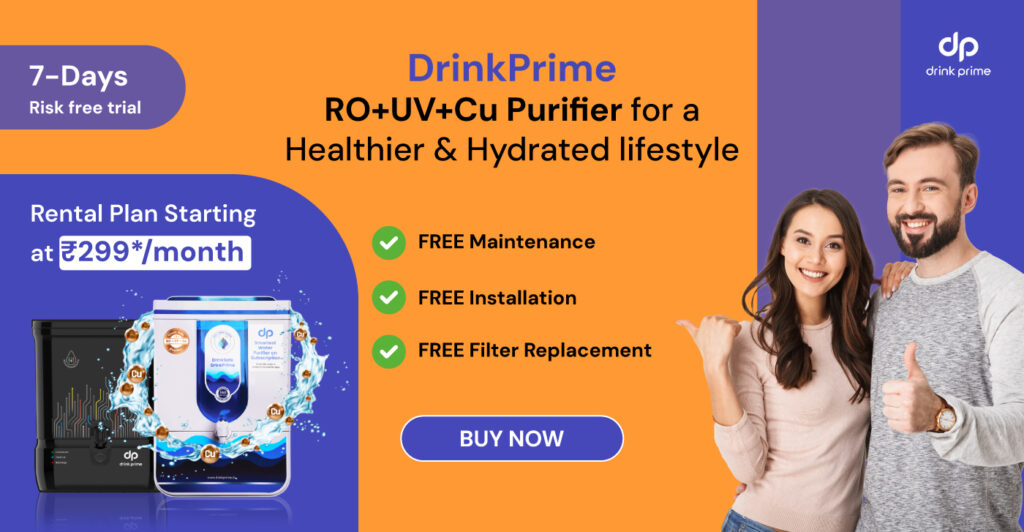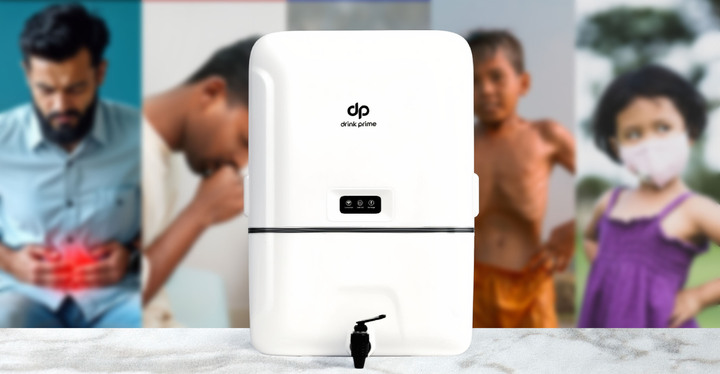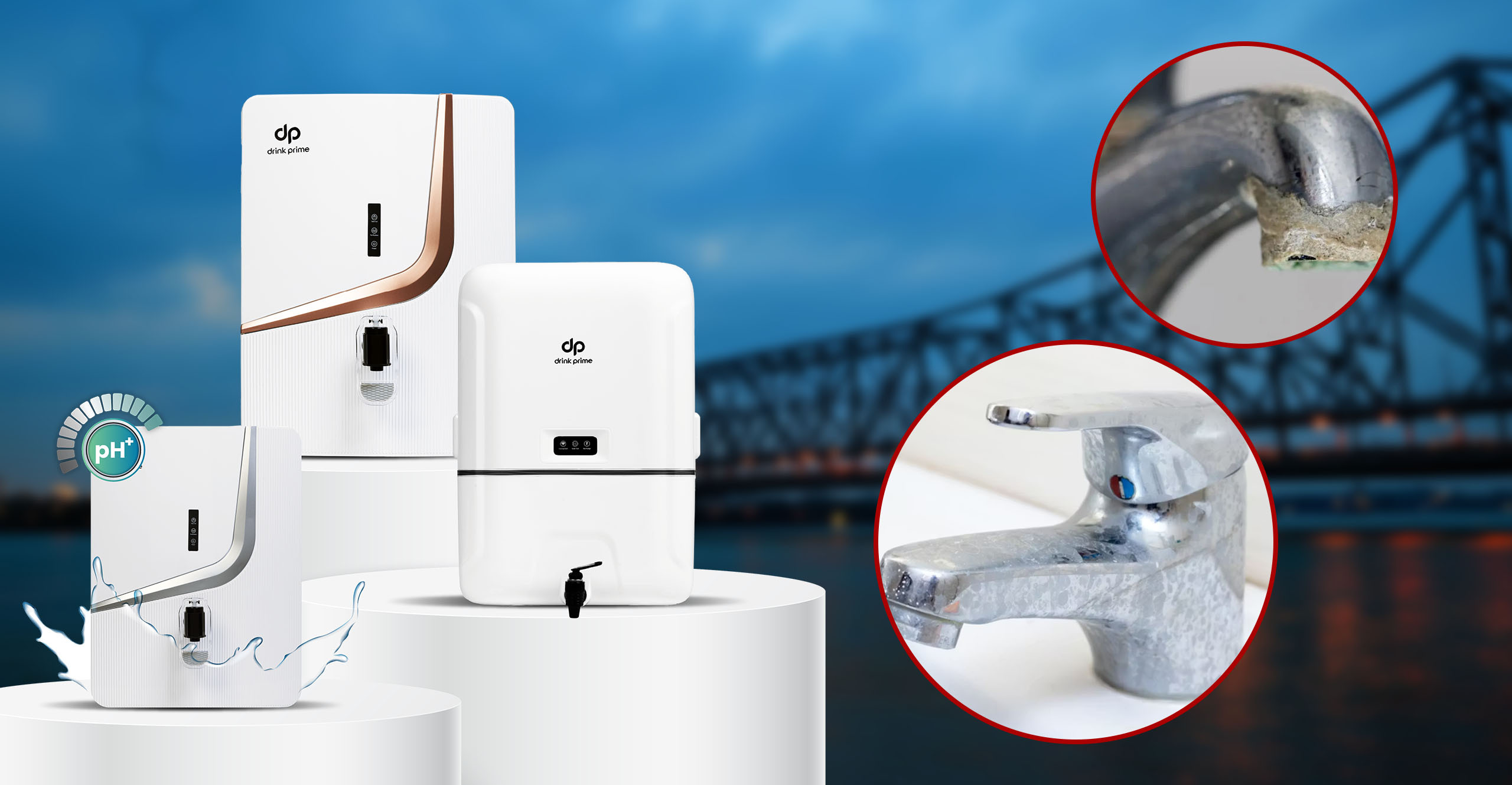Getting safe, clean, and healthy drinking water shouldn’t be complicated, but presently selecting the right water purifier often feels like a tedious task. If you are someone who comes across terms like UF membrane or RO membrane, then you know how confusing it can get at times.
Understanding the difference between RO membrane and UF membrane is important, since both are designed to filter all the impurities, but they do it in a different way. In this blog, we will understand RO membranes vs UF membranes and explore their benefits as well.

What Is an RO Membrane?
A Reverse Osmosis (RO membrane) is a semipermeable membrane that completely removes dissolved impurities from the water. Besides, it works by applying pressure to force water molecules through the membrane while leaving all the contaminants behind. Also, this includes dissolved salts, heavy metals like arsenic and lead, and even harmful chemicals like pesticides.
Understanding the Benefits of RO Membrane
Reverse Osmosis removes all the dissolved salts and minerals, and these are ideal for hard water areas. Moreover, it eliminates the heavy metals and protects your family from toxic elements. RO membranes are highly effective, but they also remove some essential minerals, and that’s why many modern RO water purifiers come with mineral cartridges to restore the natural balance of water.
What Is a UF Membrane?
A UF or Ultrafiltration membrane works without electricity or pressure. It comprises microscopic pores that allow water to pass through but block viruses, bacteria, and even the larger impurities as well. Unlike an RO membrane, a UF membrane does not remove the minerals and dissolved salts, which means that water sustains its mineral contents and natural taste.
Key Benefits of UF Membrane
Ultraviolet membrane or UF membrane provides a key advantages that make it a smart and ideal choice for many households. It effectively removes bacteria and suspended impurities, hence making sure that the water is fresh, clean, and healthy. Unlike the RO system, it makes an ideal choice for those who prefer water that’s naturally rich in nutrients. Also, another benefit is that a UF membrane operates without any electricity, making it both cost-effective and energy-efficient. UF membrane is particularly well-suited for certain areas where the water supply is relatively clean, but at times it can contain bacterial contamination. Additionally, since it doesn’t rely on high pressure to function, a UF membrane is ideal for homes with low water pressure.
RO Membrane vs UF Membrane: Key Differences
1. Inlet Condition
The inlet condition for the RO membrane is best when the feed water comprises high TDS or Total Dissolved Solids, hardness, heavy metals, or chemical contaminants. It requires stable water pressure and electricity. Also, the RO membrane prefers pre-sediment and activated carbon stages.
On the other hand, when it comes to UF membrane, it works best when the feed water has consistently low-to-moderate TDS, but may have turbidity issues or microbial contaminants. UF membrane works even at low pressure, and many Indian household UF units run without electricity.
2. Application Field
RO membranes are ideal for homes that make use of borewell or groundwater, where TDS or Total Dissolved Solids levels are high. They are widely used in commercial kitchens, clinics, and other settings where water purity is important. Moreover, the RO system effectively reduces the TDS and removes heavy metals, making it suitable for environments that require low-mineral, clean, and healthy water.
Ultrafilter membranes are commonly used for municipal tap water treatment, in several apartments, and in areas where the water has certainly low TDS but may be contaminated with other microorganisms. They are also ideal for locations with low water pressure and serve effectively as a pre-treatment stage in multi-stage purification systems, making sure that the water is free from all the suspended solids while retaining essential minerals.
3. Product Water Quality
RO membrane produces water with very low TDS, almost free of minerals, effectively eliminating salts, heavy metals, dissolved organic compounds, and microbes. Because this purified water can lack essential minerals, it is often followed by a remineralisation stage to improve and support health. On the other hand, UF membrane produces water that is microbiologically safe, which removes cysts, bacteria, and suspended solids, but retains all the dissolved minerals and salts.
Why Choose a Water Purifier With Both RO and UF
Most of the modern water purifiers effectively combine RO and UF membranes to give the best of both. This advanced approach makes sure that the water is free from all the harmful dissolved bacteria and salts while retaining all the important minerals.
Why Choose DrinkPrime
So investing in a high water purifier is important, but maintenance and service can often be a hassle. That’s where DrinkPrime steps in. DrinkPrime provides a subscription-based model water service with RO and UF technology, removing the upfront cost of buying a water purifier. The merit of DrinkPrime is that it has advanced purification with an RO+ UV lamp for safe, clean, and fresh water. It also provides regular maintenance and filter replacement, and makes sure that there is optimal performance.
Summary
In summary, choosing the right water purifiers doesn’t have to be complicated. Moreover, understanding the differences between RO and UF membranes helps you make an informed decision that is based on your water quality and household needs. RO membrane, on the other hand, is an ideal choice for areas with hard water, high TDS, or chemical contamination, while UF membranes are ideal for low-TDS water with bacterial impurities, hence preserving important minerals and taste. For Indian households seeking comprehensive protection, modern water purifiers that combine RO and UF technology deliver the best in both worlds.
DrinkPrime offers advanced RO+UF filtration without worrying about installation costs and maintenance. Besides, a subscription-based model makes sure that you get access to safe water with regular filter and replacements, making healthy hydration effortless.



